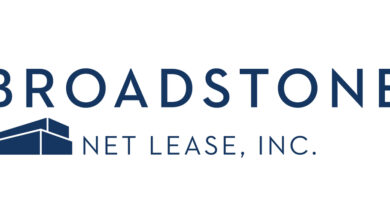Global Ankylosing Spondylitis (Bekhterev’s Disease) Epidemiology Forecast to 2030 – ResearchAndMarkets.com

DUBLIN–(BUSINESS WIRE)–The “Ankylosing Spondylitis (Bekhterev’s Disease) – Epidemiology Forecast to 2030” report has been added to ResearchAndMarkets.com’s offering.
This report delivers an in-depth understanding of the AS, historical and forecasted epidemiology as well as the AS trends in the United States.
Ankylosing Spondylitis (AS) Disease Understanding
Ankylosing Spondylitis (AS) also called Bechterew’s disease is a common inflammatory rheumatic disease that affects the axial skeleton, causing characteristic inflammatory back pain, which can lead to structural and functional impairments and a decrease in quality of life. Clinical features of this group include inflammatory back pain, asymmetrical peripheral oligoarthritis (predominantly of the lower limbs), enthesitis, and specific organ involvement such as anterior uveitis, psoriasis, and chronic inflammatory bowel disease. Aortic root involvement and conduction abnormalities are rare complications of AS. AS affects men more often than women. The general onset of AS commonly occurs in younger people, between the ages of 17 and 45. However, it can also affect children and those who are much older (Spondylitis Association of America).
AS is a type of spondyloarthropathy (SpA) – Spondyloarthropathies are a family of related inflammatory rheumatic disorders which also include reactive arthritis (RA), psoriatic arthritis (PsA), spondyloarthropathy associated with inflammatory bowel disease (IBD), undifferentiated spondyloarthropathy (USpA), and, possibly, Whipple disease and Behcet disease – and is often found in association with other spondyloarthropathies, including ReA, PsA, ulcerative colitis (UC), and Crohn disease. It has also been found that such patients quite often have a family history of either AS or another spondyloarthropathy. Axial Spondyloarthritis or axial SpA (axSpA) refers to a particular form of spondyloarthritis in which the predominant symptom is inflammatory back pain. Axial SpA is further divided into two subgroups as Ankylosing spondylitis (AS) and non-radiographic axial spondyloarthritis (nr-axSpA).
Ankylosing Spondylitis (AS) Epidemiology Perspective
The disease epidemiology covered in the report provides historical as well as forecasted epidemiology segmented by Total Prevalence of Ankylosing Spondylitis, Diagnosed Prevalence of Ankylosing Spondylitis, Gender-specific Diagnosed Prevalence of Ankylosing Spondylitis, Age-specific Diagnosed Prevalence of Ankylosing Spondylitis, and Gene-specific Diagnosed Prevalence of Ankylosing Spondylitis scenario in the United States from 2018 to 2030.
Ankylosing Spondylitis (AS) Detailed Epidemiology Segmentation
- The total prevalent population of Ankylosing Spondylitis (AS) in the US is anticipated to rise from 2018 to 2030. Out of the total prevalent population of 1,300,971 cases, 556,688 cases were diagnosed in 2020. The prevalent cases are expected to increase at a CAGR of 0.97% for the study period of 2018-2030.
- The prevalent population of Ankylosing Spondylitis (AS) showed a male predominance. Out of the total diagnosed population of 556,688 cases in the US, 389,681 and 167,006 cases were contributed by males and females, respectively, in 2020.
- In the epidemiology model, different age-groups are included, i.e., 18-29 Years, 30-39 Years, 40-49 Years, 50-59 Years, 60-69 Years, and 70+ Years. It is estimated that the most prevalent age-group for AS in the United States was 40-49 Years in 2020, which accounts for nearly 150,306 of total AS prevalent cases.
The diagnosis of Ankylosing Spondylitis can be tough to spot as so many people have back pain – its main symptom. Additionally, there are no specific lab tests to identify ankylosing spondylitis. All these factors play a major role in the low diagnosis of AS. Due to the increase in advancement, it is estimated that in the coming years, the diagnosis rate may increase.
Scope of the Report
- The report covers the descriptive overview of AS, explaining its causes, symptoms, pathophysiology, and genetic basis.
- The report provides insight into the historical and forecasted patient pool covering the United States.
- The report assesses the disease risk and burden and highlights the unmet needs of the United States.
- The report helps to recognize the growth opportunities in the United States with respect to the patient population.
- The report provides the segmentation of the disease epidemiology for the United States by Total Prevalence of Ankylosing Spondylitis, Diagnosed Prevalence of Ankylosing Spondylitis, Gender-specific Diagnosed Prevalence of Ankylosing Spondylitis, Age-specific Diagnosed Prevalence of Ankylosing Spondylitis, and Gene-specific Diagnosed Prevalence of Ankylosing Spondylitis.
Reasons to Buy
The AS report will allow the user to:
- Develop business strategies by understanding the trends shaping and driving the United States AS epidemiology forecast.
- The AS epidemiology report and model were written and developed by Masters and Ph.D. level epidemiologists.
- The AS epidemiology model developed is easy to navigate, interactive with dashboards, and epidemiology based on transparent and consistent methodologies. Moreover, the model supports data presented in the report and showcases disease trends over the 10-year forecast period using reputable sources.
Key Topics Covered:
1 Key Insights
2 Executive Summary of Ankylosing Spondylitis (AS)
3 Disease Background and Overview: Ankylosing Spondylitis (AS)
4 Case Reports
5 Patient Journey
6 Epidemiology and Patient Population
7 Appendix
8 Publisher Capabilities
9 Disclaimer
10 About the Publisher
For more information about this report visit https://www.researchandmarkets.com/r/gonh67
Contacts
ResearchAndMarkets.com
Laura Wood, Senior Press Manager
[email protected]
For E.S.T Office Hours Call 1-917-300-0470
For U.S./CAN Toll Free Call 1-800-526-8630
For GMT Office Hours Call +353-1-416-8900





